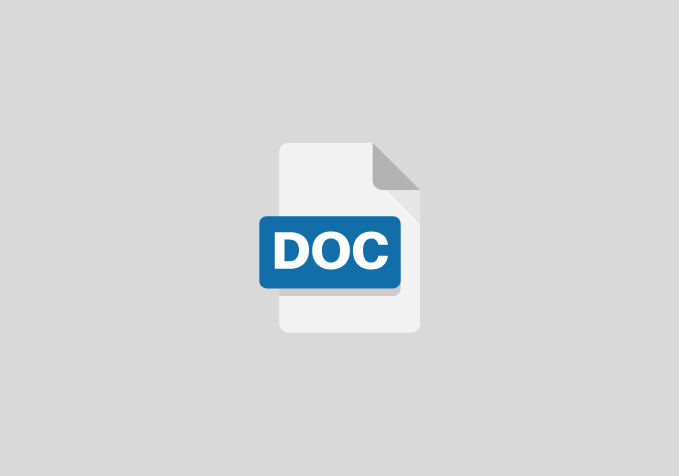Computerization of Medical Records and Diagnosis (a Case Study of N.N.P.C. – Waterlines Clinics, Port Harcourt)
CHAPTER ONE
OBJECTIVES OF THE STUDY
All over the world, accuracy is expected in diagnosis result and medical records keeping. However, the objectives of this study include;
- studying the existing medical management system
- to fully automate the operation of the medical centre
- to achieve good computing skills for the management and
- to expose the doctors, nurse and other staffs to the importance of practical experience in large database system
CHAPTER TWO
REVIEW OF RELATED LITERATURE
INTRODUCTION
The review of this project will constitute the definition and explanation analysis of what a medical database, hospital, the need for database management system in medical centers, the functions provided in medical database system and the features of medical database management system. It also discusses the cost and benefit of running an automated medical database management system.
DATABASE AND DATABASE MANAGEMENT SYSTEM (DBMS)
A database is a collection of related records organized in such a way that a computer program can quickly select desired piece of data. It is a collection of data organized so that they can be accessed, and utilized by different applications (Mrs. Opara & Oguike, 2006).
Database management system (DBMS) is a collection of programs that store, modify and extract information from a database. It’s extremely complex software that controls the organization, storage and retrieval of data in a database.
CHAPTER THREE
SYSTEM METHODOLOGY, ANALYSIS AND DESIGN
INTRODUCTION:
Advertisements
This particular section constitutes a concise and well explained analysis of the current system, the problems inherent in the system which are responsible for rendering the improved or enhanced performance and management of the system.
More so, it highlights the sources of data for the development of the system, the organizational chart, output files and records. Also, the basic problems and weaknesses of the current system.
The proposal of the system about to be developed is also offered in this section of the study. It also talks about the expectations of the new system and its specification and justification. However, the advantages of this new system are also discussed here.
CHAPTER FOUR
SYSTEMS IMPLEMENTATION
INTRODUCTION
The implementation follows from the detailed design stage. This involves coordinating efforts of user department and the data processing department. System implementation is a process of translation. Detailed design is translated into programming language that is ultimately and automatically transformed into machine executable instructions.
CHAPTER FIVE
SUMMARY, CONCLUSION AND RECOMMENDATION
INTRODUCTION:
In this chapter, I have brought to you the summary, conclusion and recommendations o all my work in this project study.
Having known the roles of the computer system in medical records keeping and diagnosis, also, how it conserves time for both the physician and patients, making work easier than before when it was done manually and finally increased the rate of services rendered to patients. It is good I summarize, conclude and give recommendations.
SUMMARY:
This very study, examined the computerization of medical records and diagnosis. Nearly every hospital and clinics in the world depend on the computer system for their various activities.
The research hypothesis have been proved considering the response obtained from the interview administered and comments got from scientists in the book.
However, it is observed that this study, met its goal of computerizing medical records and diagnosis which is the fastest mode of operation today.
CONCLUSION:
The role of computerize medical records and diagnosis in the technological development of any nation today cannot be over emphasized.
Although, our nation Nigeria from all indications is far behind the technological trend of the world today.
As a matter of fact, we cannot sit down and watch things or allow it to move the way they are now. Somebody or group of persons need to rise up and initiate the way forward. It is strongly advised that institutions of higher learning should embrace this work, as it will allay the burden of patients diagnosis, record keeping and treatment.
RECOMMENDATION
The importance of the computer system in the medical records keeping and diagnosis has been highlighted and should not be over emphasized. Therefore, the following recommendations based on findings of this very study would guide Nigerian National Petroleum Corporation- Waterline clinics Port Harcourt to computerize their medical system and also help those already implementing a computerized system to improve on the operations.
- There should be effective training and employment of personnel for people handling the new system in order to achieve the desired goals.
- Feasibility studies should be carried out to ensure accuracy in standardization.
- All files should be backed up for security reasons.
- Uninterrupted power supply (UPS) should be provided for all computer systems involved.
- If possible, this new system should be networked.
- Constant power supply should be ensured too.


